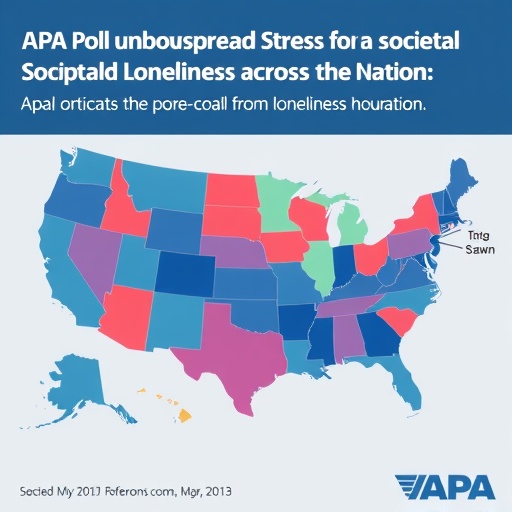In the United States, the demographic landscape of the incarcerated population is undergoing a significant transformation, with a notable increase in the number of older adults within correctional facilities. Currently, approximately 15% of those incarcerated—roughly 175,000 individuals—are aged 55 years or older. This shift presents complex challenges, particularly in the management of chronic and life-threatening diseases such as cancer, which has emerged as a leading health threat for this aging demographic.
Cancer morbidity and mortality among the incarcerated population are disproportionately high compared to the general population, underscoring systemic disparities in health outcomes. Despite constitutional mandates ensuring access to healthcare within correctional settings, emerging evidence suggests that the quality of cancer care delivered to incarcerated individuals falls short of community standards, potentially exacerbating mortality rates. This discrepancy raises critical questions about the underlying factors influencing cancer treatment efficacy in carceral environments.
A groundbreaking study led by researchers at Yale School of Medicine delves into the quality of oncologic care administered to individuals diagnosed with cancer during incarceration or shortly thereafter. Through rigorous analysis of statewide cancer and correctional datasets, the team sought to quantify the timeliness and adherence to guideline-recommended treatment protocols, illuminating gaps that might contribute to poorer outcomes for this vulnerable population.
Published in the high-impact journal JAMA Network Open, the study harnessed data spanning from 2005 to 2016 derived from the Connecticut Tumor Registry coupled with rosters from the Connecticut Department of Correction. The cohort comprised 690 individuals categorized into three groups: those diagnosed with invasive cancer while incarcerated, those diagnosed within twelve months post-release, and those with no history of incarceration, enabling comparative assessment of treatment trajectories across these populations.
The evaluative framework focused on critical quality indicators, including time intervals to initiation of primary treatment modalities—surgery, chemotherapy, and radiation therapy—as well as conformity with recommended treatment regimens per established clinical guidelines. Particular attention was paid to treatment initiation within a 60-day window following cancer diagnosis, a benchmark correlated with improved prognostic outcomes.
Results unequivocally indicated that individuals diagnosed during incarceration experienced significant delays in starting cancer treatment and were less likely to receive treatments aligned with clinical recommendations when compared to their never-incarcerated counterparts. Similarly, those diagnosed within the first year following release faced comparable challenges, revealing a continuity of care deficit during the transitional phase out of incarceration.
This treatment gap presents multifactorial challenges. In the carceral health system, specialized cancer care is predominantly outsourced to external healthcare institutions, including academic medical centers and comprehensive cancer centers, which typically offer advanced therapeutic options and improved patient outcomes. While outsourcing theoretically facilitates access to high-caliber treatment, logistical complications—such as appointment scheduling, transportation arrangements, and inter-institutional coordination—pose substantial barriers that may delay or impede timely care.
Additionally, structural constraints intrinsic to publicly funded correctional healthcare systems amplify these challenges. Budget limitations affect contractual relationships with external providers and restrict resource allocation, potentially impacting the availability and quality of oncologic services accessible to incarcerated patients. These systemic factors necessitate policy-level considerations to enhance equity in healthcare delivery for incarcerated populations.
Experts involved in the study emphasize the critical importance of recognizing and mitigating these barriers within clinical and administrative spheres. Ilana Richman, assistant professor at Yale and co-author of the study, highlights that physicians and health systems tasked with caring for justice-involved individuals must actively facilitate pathways to timely, guideline-adherent cancer care to bridge existing gaps and improve survival outcomes.
Moreover, Cary Gross, the study’s senior author and professor of medicine and epidemiology at Yale, stresses the broader implications of these findings. Given the constitutional mandate for healthcare access in correctional settings, understanding and rectifying deficiencies in cancer treatment is both a moral and public health imperative. Gross advocates for systematic efforts to dismantle healthcare disparities tied to mass incarceration, ensuring that innovations in cancer detection and therapy are equitably accessible.
The study’s implications reach beyond clinical practice into public health policy and social justice domains. As the United States grapples with an aging incarcerated population, integrating oncology care within correctional health infrastructure, supported by comprehensive coordination and adequate funding, becomes essential to improving cancer prognosis for this marginalized group.
Complementing their quantitative research, Yale investigators are conducting qualitative interviews with individuals diagnosed with cancer during incarceration to gather nuanced insights into patient experiences and system-level impediments. This mixed-methods approach aims to inform tailored interventions promoting patient-centered care and systemic reform.
The research was supported by a grant from the National Institutes of Health, underscoring the vital role of federal funding in addressing health disparities among justice-involved populations. The study also benefits from the expertise of Yale’s Cancer Outcomes, Public Policy, and Effectiveness Research (COPPER) Center, which focuses on driving evidence-based improvements in cancer care and outcomes.
In conclusion, this comprehensive investigation reveals that incarceration imposes significant barriers to the delivery of timely, high-quality cancer care, which may underlie the elevated cancer mortality observed in this population. Addressing these disparities demands coordinated efforts spanning clinical care, policy reform, and social advocacy to ensure dignity, equity, and optimal health outcomes for incarcerated individuals facing cancer.
Subject of Research: Quality of cancer care among incarcerated and recently released individuals diagnosed with cancer.
Article Title: Incarceration and Quality of Cancer Care
Web References:
https://jamanetwork.com/journals/jamanetworkopen/fullarticle/2840040
http://dx.doi.org/10.1001/jamanetworkopen.2025.37400
Keywords: Imprisonment, Oncology, Cancer patients, Health care
Tags: aging population in the criminal justice systemcancer care disparities in incarcerated populationscancer treatment challenges in correctional facilitieschronic disease management in prisonsdisparities in cancer outcomes in the UShealth policy implications for incarcerated individualshealthcare access for incarcerated individualsoncology care standards for prisonersquality of healthcare for older adults in prisonresearch on cancer care in correctional settingssystemic health inequalities in incarcerationYale School of Medicine cancer research





